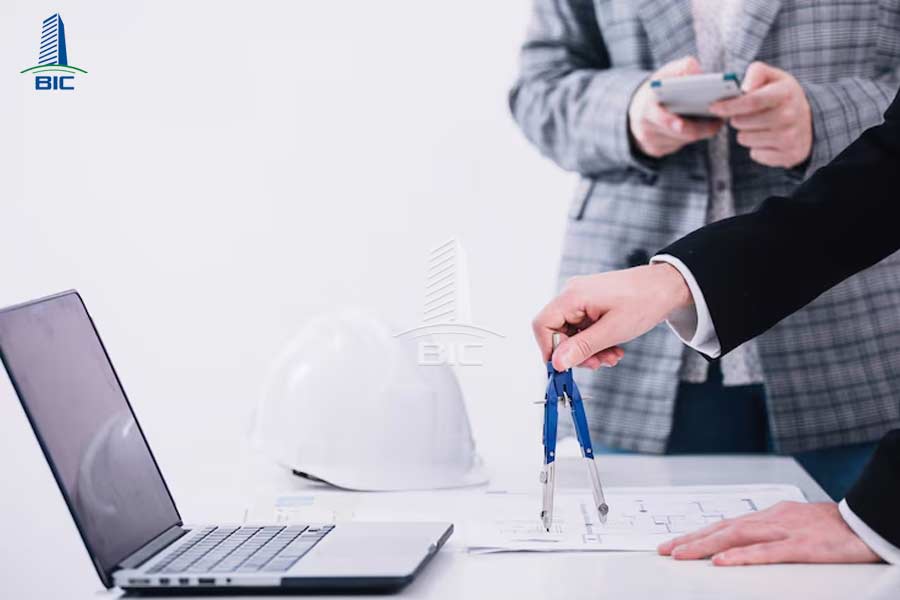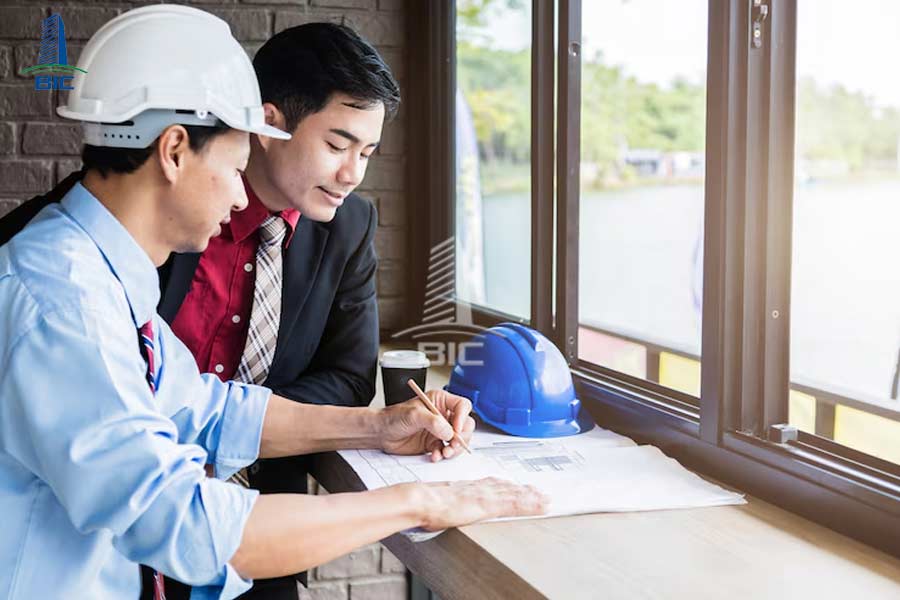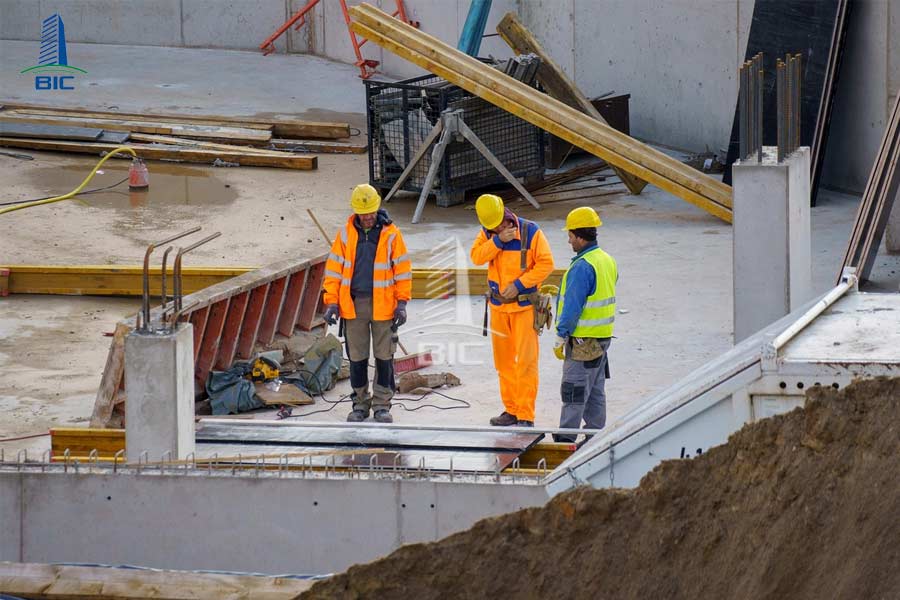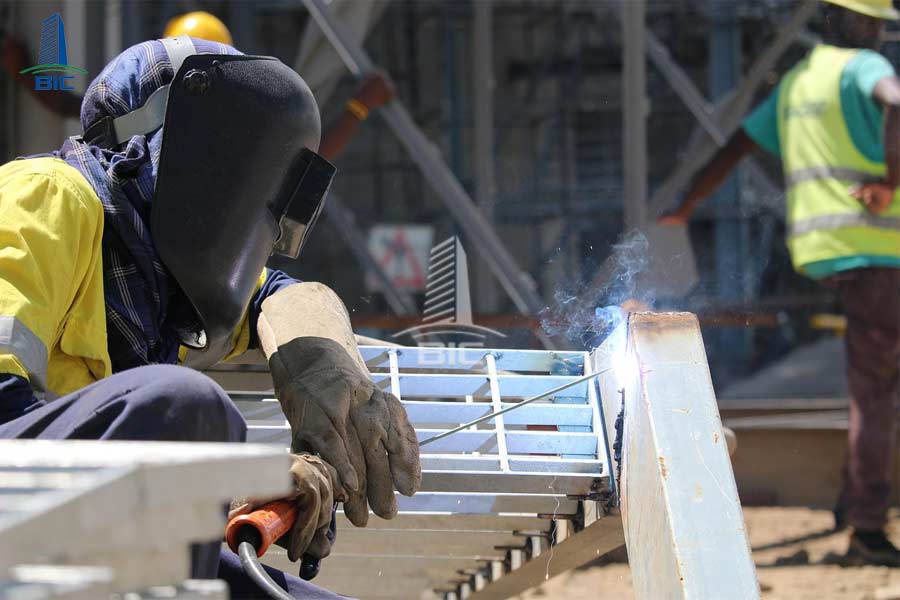
In the field of industrial construction particularly production factories a factory design drawing is not just a technical schematic. It serves as the foundation for organizing the production line, planning functional systems, and ensuring long-term operational efficiency. However, one of the biggest issues many projects face is the disconnect between design and actual construction. Without close supervision, even the most optimized designs can be "distorted" during implementation.
For this reason, the question “Does the design firm provide construction supervision?” is no longer secondary, it should be addressed right from the contract signing stage. Whether a design firm participates in construction supervision directly affects the synchronization between the drawings, the construction site, and actual operations. This, in turn, impacts the overall quality, project timeline, and investment costs.
As an experienced factory design firm, BIC understands the critical role of construction supervision especially for technically demanding projects like food factories, cold storage warehouses, GMP cleanrooms, or multi-story factories. This article will help investors understand when design must be paired with supervision, what the specific benefits are, and what contract terms should be clearly defined to avoid risks during project execution.
In practice, not all factory design firms offer construction supervision services, and not all investors understand the difference between the service models available today. A lack of alignment between design and supervision from the outset can result in major discrepancies during construction, leading to financial waste, schedule delays, and even operational issues later on.
This is the most common model used by smaller design firms or for projects with limited budgets. The firm provides a complete design package (architectural, structural, MEP, etc.) and ends their involvement at handover.
Risk: No one represents the "design intent" at the construction site. If the construction team misinterprets or makes mistakes, the investor may struggle to detect and correct them in time.
In this model, the firm handles the entire process: from surveying, conceptualizing, drafting, cost estimating, to construction and supervision throughout.
Benefit: Ensures high consistency between design and reality. The investor works with one unified team, saving time and effort.

Construction supervision in factory projects differs from typical civil works. It requires:
- Deep understanding of complex technical systems: electrical, plumbing, ventilation, fire protection, and internal infrastructure.
- Ability to read and understand detailed drawings and the logic of production workflows: clean-dirty zoning, flow of people, materials, and products.
- Quality control of materials and construction methods.
- Timely identification and correction of deviations to avoid long-term cost overruns.
Therefore, if the design firm does not directly supervise construction, the investor must either hire a technically competent supervision team or rely on the contractor's own reporting which creates conflicts of interest and risks of unapproved processes.
The answer is Yes, especially if you want to ensure the project is built as designed. In food factories, ISO/GMP-certified plants, or projects with strict requirements, even minor deviations can lead to major consequences in terms of operation, licensing, or product quality.
When a factory design firm can also take on the role of construction supervisor, it demonstrates comprehensive technical competence and offers strategic advantages for the investor—especially in terms of schedule, quality, and long-term operational efficiency. Below are three core benefits:
A factory drawing is not just a visual or general layout—it encompasses all critical technical details: foundations, steel structures, floor loads, electrical, water, fire escape systems, air supply, wastewater treatment, etc.
Only when the designer is present on-site can they:
- Detect and correct errors early on.
- Clearly convey the design intent to the construction crew.
- Prevent costly design deviations.
Outcome: The project maintains the integrity of its technical quality, which is crucial for ISO, GMP, or LEED-compliant facilities.

A well-designed factory can still fail if poorly built. When the design firm also supervises:
- Material types and sources are verified.
- Structural work, electrical systems, and fire safety installations are monitored to meet technical and safety standards.
- The contractor adheres to critical specifications: floor slopes, waterproofing, drainage, ventilation, and equipment layout.
This is particularly essential for high-standard facilities like food processing plants, precision mechanical workshops, and pharmaceutical cleanrooms.
Mistakes during construction lead to:
- Project delays due to rework.
- Unexpected material and labor costs.
- Missed handover deadlines affecting production schedules.
When the design team is directly involved in supervision:
- Mistakes are prevented early.
- The investor avoids the stress of “chasing down errors.”
- Budget is protected, and total investment is optimized.
A design-supervision firm ensures process consistency and takes full responsibility for the final result. For high-standard industrial projects, this isn’t just a reasonable choice, it’s the optimal solution for long-term investment efficiency.
A factory design contract isn’t just an agreement on drawings—it’s a commitment to technical responsibility and the design firm’s level of involvement during construction. Many investors, due to inexperience, fail to clarify supervision responsibilities at the start, leading to miscommunication, lack of coordination, and unexpected costs.
To avoid these risks, make sure the following three points are clarified before signing:
This is the most important question. Many investors assume the design firm will supervise, while the contract only covers the delivery of technical drawings.
Thus, make sure to:
- Ask the firm to specify in writing whether supervision is included.
- If yes: Define the type of supervision—periodic, full-time technical, or remote support?
- If no: Consider hiring an independent supervision team with expertise in industrial systems.
Note: Technical support “if needed” should be defined in clear contractual terms to avoid misunderstandings later.

If the design firm provides supervision, clarify:
- Scope: Which parts are covered? Structural, MEP, fire safety, environmental systems, etc.
- Frequency: How often will they be on site? Will they attend milestone inspections?
- Authority: Can they stop work to correct deviations or only advise?
A professional design contract must document these terms in writing, not just verbally.
For technically complex factory projects such as:
- Food factories needing GMP or HACCP compliance.
- Precision mechanical workshops requiring vibration control, stable foundations, and electrical consistency.
- Logistics hubs requiring traffic flow, fire escape, and emergency systems...
Hiring a specialized independent supervisor protects the investor’s interests by:
- Providing technical counterpoints to the contractor.
- Verifying fieldwork against the design.
- Proposing on-the-fly improvements without compromising functionality.

If the design firm supervises, your internal team may support as needed. But if the firm only delivers drawings and offers no on-site supervision, hiring a dedicated supervision team is mandatory.
Clarifying the design firm’s supervision role, scope, and responsibility from the beginning is how investors manage risk and maximize return on investment.
In a factory construction project, getting the design right is just the beginning ensuring it’s built right is the end goal. Misalignment between drawings and reality not only causes cost overruns but also leads to technical, legal, and operational risks.
Therefore, choosing a design firm with construction supervision capabilities is essential to achieving sustainable and efficient use of the facility.
If you're looking for an integrated design–supervision–execution solution, contact BIC your strategic partner with expertise, field experience, and the ability to support you through every stage of construction.